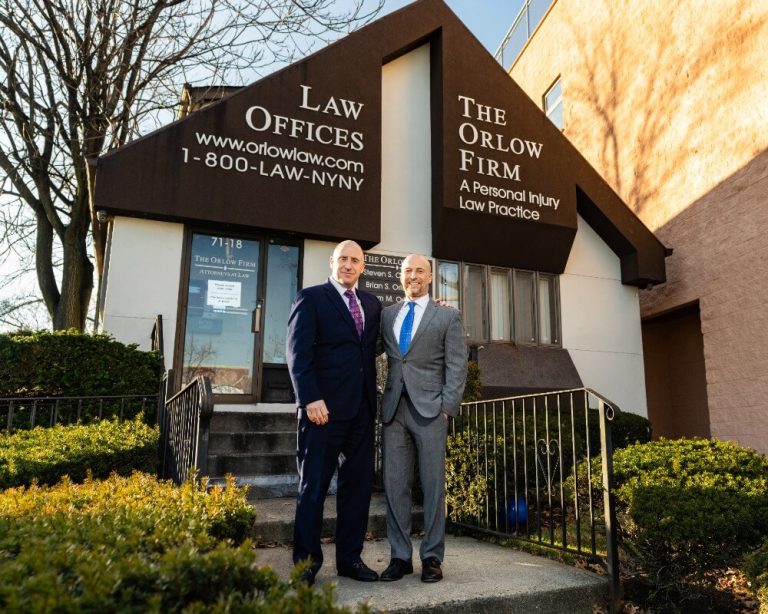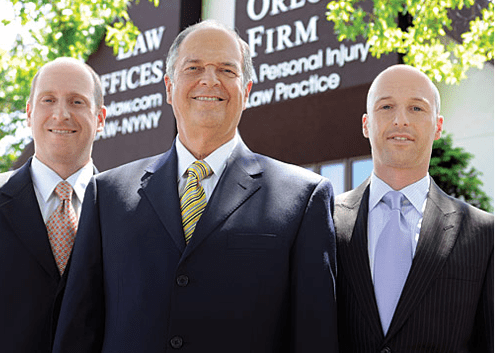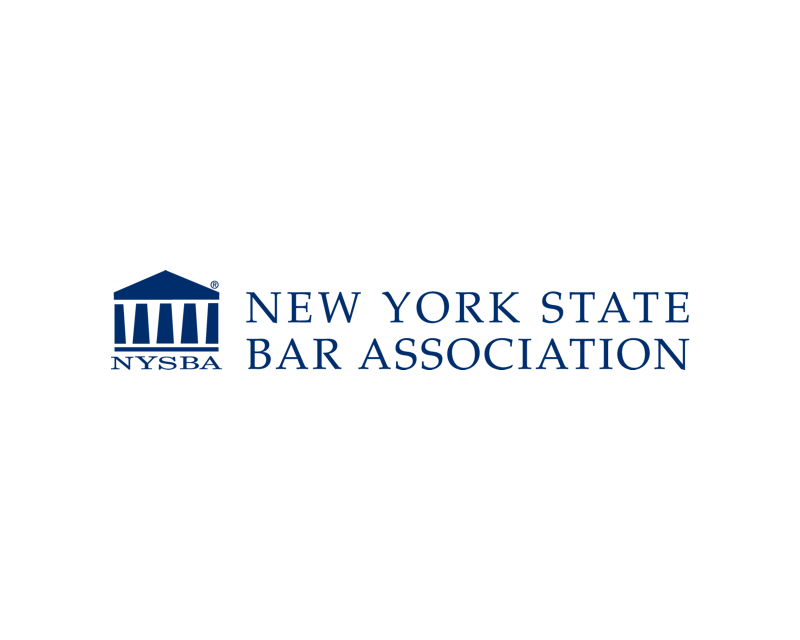The Following People Contributed to This Page
Cindy Cordova is a seasoned legal writer with over seven years of experience crafting clear, informative, and professional content for law firm websites. With a B.A. in English from Trinity Christian College, she combines her strong writing background with a deep understanding of legal topics to help firms connect with their clients through trustworthy and accessible content.
- June 10, 2025
What Is the Statute of Limitations for Wrongful Death in New York?
Quick Answer: In New York, the statute of limitations for filing a wrongful death claim is generally two years from the date of death. If you miss this deadline, you may lose the right to sue. If you have questions about how the statute of limitations applies to your situation, call The Orlow Firm at (646) 647-3398 for a free and confidential consultation.
Statute of Limitations for Wrongful Death in New York: An Overview
In New York, the statute of limitations for a wrongful death claim is generally two years from the date of the person’s death. This means you only have two years to take legal action in court. If you miss this deadline, you may lose the right to file a lawsuit.
This time limit applies statewide, including in New York City. Whether the fatal incident happened in the Bronx, Brooklyn, Manhattan, Queens, or Staten Island, the same two-year rule usually applies. A wrongful death claim is a legal action brought when a person dies due to someone else’s negligence or wrongdoing.
It’s important to understand that a wrongful death lawsuit is different from a personal injury lawsuit. Only the personal representative of the deceased person’s estate can file a wrongful death claim in New York. That person is often named in the will or appointed by the court. If your loved one died in a construction accident, for example, you may want to speak with an NYC construction accident lawyer to learn more about your options.
If someone passes away due to medical malpractice, a car crash, or a workplace injury, the two-year countdown usually starts from the date of death—not the date of the accident. This can be tricky to figure out, so it’s a good idea to take action early to avoid missing the deadline.
Below is a quick summary of key points about New York’s wrongful death statute of limitations:
- Time limit: You generally have two years from the date of death to file a wrongful death lawsuit.
- Who can file: Only the personal representative of the estate can start the case, not just any family member.
- Applies to NYC: This law applies in all five boroughs of New York City.
- Late filing risks: Missing the deadline can permanently block your right to seek compensation.
Wrongful death cases are emotionally and legally complex. Acting promptly can help protect your rights and give your family the chance to seek justice. If you have questions about how the statute of limitations applies to your situation, call The Orlow Firm at (646) 647-3398 for a free and confidential consultation.
Why Does the New York Wrongful Death Statute of Limitations Matter?
The statute of limitations sets the time limit to file a wrongful death lawsuit in New York. This deadline matters because it directly affects your chance to seek justice and financial recovery after the loss of a loved one. If you miss the deadline, you may lose the right to file your case entirely, no matter how strong it is.
Wrongful death cases in New York usually must be filed within two years from the date of the person’s death. This means you have a limited window to take legal action. That time can pass quickly, especially while you’re grieving and handling funeral arrangements or other family matters.
Here are a few key reasons why the wrongful death statute of limitations matters:
- Legal Rights Expire: Once the two-year deadline passes, courts can dismiss your case. That means you won’t be able to recover damages, even if someone else was clearly responsible.
- Preserving Evidence: Acting early helps preserve important evidence. Over time, records can be lost, and witnesses may forget details or become hard to find.
- Financial Support: A wrongful death case can help your family get compensation for loss of income, medical bills, and funeral costs. Missing the deadline can leave families without much-needed financial help.
- Peace of Mind: Starting the legal process within the correct timeframe can help bring closure and allow loved ones to focus on healing.
In a busy place like New York City, investigating a wrongful death can take time. Important steps include reviewing medical records, gathering witness statements, and dealing with insurance companies. That’s why it’s important to understand the statute of limitations early on.
If you think someone else’s careless or wrongful actions led to your loved one’s death, don’t wait. Contacting an attorney as early as possible can help protect your rights and keep your legal options open.
To speak with a compassionate legal professional about your case, call The Orlow Firm at (646) 647-3398 for a free consultation. We’re here to help you understand your options and guide you through the process.
Who Can File a Wrongful Death Lawsuit in New York?
In New York, only certain people are legally allowed to file a wrongful death lawsuit. Unlike in some states where any close relative can sue, New York law is more specific. Only the personal representative of the deceased person’s estate can file the lawsuit in court.
This person is often named in the deceased’s will or appointed by a court if no will exists. New York does not allow spouses, children, or parents to sue for wrongful death on their own unless they are also the personal representative of the estate.
Here’s how it works in practice:
- If the deceased had a will : The personal representative is named in the will. This person is also called the “executor.”
- If the deceased did not have a will : A court can appoint someone, usually a close family member, to be the “administrator” of the estate.
While only the personal representative can file the lawsuit, the case is brought on behalf of the deceased person’s family members. These may include:
- Spouse
- Children
- Parents
- Other dependents or heirs
If the lawsuit is successful, the court can award damages (money) to the surviving family members. This may include payment for lost income, funeral costs, and loss of support or care the loved one provided.
For example, if a father dies in a workplace accident in Brooklyn and is survived by his wife and two children, the person named as the estate’s representative—maybe his wife or brother—would file the wrongful death claim. Even though the representative files the suit, any compensation awarded would be shared by the wife and children based on what they lost.
Understanding who can file is an important step in protecting your legal rights. If you’re unsure who the personal representative is, or need help becoming one, speaking with an attorney can help clarify your options.
If you’ve lost a loved one due to someone else’s actions in New York City and have questions about filing a wrongful death lawsuit, you can contact The Orlow Firm at (646) 647-3398 for a free, confidential consultation.
When Does the Statute of Limitations Start in NYC Wrongful Death Cases?
In New York City, the statute of limitations for a wrongful death case usually starts on the date the person dies—not the date of the accident that caused the death. This is an important detail because there can sometimes be a delay between the injury and the time of death.
For example, if someone was seriously hurt in a car accident on January 1, but passed away from those injuries on February 1, the statute of limitations would begin on February 1—the date of death.
According to New York law, the deadline to file a wrongful death lawsuit is generally two years from the date of death. This time limit is set by the New York Estates, Powers and Trusts Law (EPTL) Section 5-4.1. If a case is not filed within this time frame, the court may not allow it to move forward.
However, knowing when the clock starts can sometimes be complicated. There are cases where families may not know right away that a loved one’s death was caused by someone else’s wrongdoing. In certain limited situations, the law might allow extra time to file. But these are exceptions, not rules.
It’s also important to know that when a government agency may be involved—such as the NYPD, a public hospital, or the MTA—special deadlines and rules apply. In these cases, you may need to file a “Notice of Claim” within 90 days of the death, and the lawsuit typically must be filed within 1 year and 90 days from the date of death instead of two years.
Because the exact starting point and deadline can vary based on the facts of each case, it’s wise to seek legal help as soon as possible. Waiting too long can put your right to seek justice—and compensation—at risk.
If you’re unsure about when your deadline begins, or whether you still have time to file, you can contact The Orlow Firm at (646) 647-3398 to get clear, compassionate guidance tailored to your situation.
Are There Exceptions to the Wrongful Death Time Limit in New York?
Yes, there are some exceptions to the wrongful death statute of limitations in New York. In most cases, you have two years from the date of your loved one’s death to file a wrongful death lawsuit. But certain situations can extend or “pause” this time limit. These exceptions can be especially important for families in New York City who may not even realize they have a case until much later.
Here are a few common exceptions to be aware of:
- Criminal Action Involving the Death: If the person who caused the death is being charged with a crime (like murder or manslaughter), the time to file a wrongful death lawsuit may be extended. In some cases, the family has one year from the end of the criminal case to file their civil lawsuit—even if the normal two years have already passed.
- Medical Malpractice: If the wrongful death involved medical malpractice, other deadlines might apply. These cases can be complex. Sometimes the clock does not start until the family knows—or should have known—that malpractice caused the death.
- Children or Minors: If the person who could bring the case (like a child) is under 18 when the death occurs, New York law might pause the time limit until they become an adult. But in wrongful death cases, the claim still usually has to be filed by the appointed personal representative, who may not be a minor.
- COVID-19 Tolling Period: During the height of the COVID-19 pandemic, New York temporarily paused (or “tolled”) many legal deadlines. If your case involves a death that occurred during this period, your time limit might be longer. However, this depends on the exact date and situation.
Even with these exceptions, the courts apply time limits strictly. If you miss the deadline, you may lose your chance to file a claim, no matter how strong your case is.
If you’re unsure whether an exception applies to your situation in New York City, it’s important to speak with a legal professional as soon as possible. Contact The Orlow Firm at (646) 647-3398 for a free consultation. We can help you understand your rights and take timely action.
How Does the Statute of Limitations Affect Your Right to Compensation?
The statute of limitations plays a critical role in your ability to seek compensation after a wrongful death in New York. If you do not file your lawsuit within the time allowed by law, you could lose your right to hold the at-fault party accountable. That means you may no longer be able to recover damages, no matter how strong your case might be.
In most New York wrongful death cases, the statute of limitations is two years from the date of death. This is a strict deadline. If you file after the time limit expires, the court will likely dismiss your case.
Here’s how this time limit can affect the compensation you may be entitled to:
- Loss of financial support: Families often rely on the income of their loved one. Filing within the time limit is necessary to claim lost wages and future income.
- Medical and funeral expenses: If you paid for hospital bills or funeral costs caused by someone else’s negligence, these expenses can be included in your claim—but only if you file on time.
- Lawsuit rights: The statute of limitations defines whether you’re allowed to bring a lawsuit in court. If you miss the deadline, your ability to legally seek justice may disappear completely.
- Leverage in settlement negotiations: Knowing you can still take the case to court gives you leverage when negotiating settlements. If the deadline has passed, that leverage is gone.
For example, suppose your loved one died due to unsafe conditions at a construction site in Brooklyn. If you wait more than two years after the date of death to file a wrongful death lawsuit, the court could dismiss your case—even if the evidence strongly supports fault. As a result, your family would miss the chance to receive compensation for lost income, pain and suffering, and other damages.
It’s also important to know that wrongful death cases can take time to investigate and prepare. Evidence must be gathered, and legal documents need careful attention. Waiting until the last minute can reduce your chances of a successful claim.
If your family is coping with the loss of a loved one due to someone else’s actions, it’s crucial to act quickly. For help understanding your rights under the New York Wrongful Death Statute of Limitations, contact The Orlow Firm at (646) 647-3398 for a free consultation. We can help you understand how the time limit affects your case and what steps you can take to protect your legal rights.
What Happens If You Miss the Deadline to File in NYC?
Missing the deadline to file a wrongful death lawsuit in New York City can have serious consequences. Under New York law, the statute of limitations for filing a wrongful death claim is generally two years from the date of the person’s death. If a lawsuit is not filed by that deadline, you may lose your right to bring a case forever.
This rule applies even if the person who caused the death was clearly at fault. Courts are very strict about these time limits. They rarely make exceptions. That means if you miss the deadline, the court could dismiss your case completely, and you won’t be able to recover damages.
Here are some key things that can happen if you miss the deadline in an NYC wrongful death case:
- Your case may be dismissed: If you try to file after the statute of limitations has passed, the court will likely reject it.
- You could lose financial compensation: Even if your loved one died because of someone else’s actions, you may lose the right to seek money for funeral costs, lost income, or pain and suffering.
- Insurance companies may deny your claim: If you file too late, insurers may refuse to talk settlement, knowing the law is no longer on your side.
Sometimes, families wait too long because they are grieving or unsure of what to do. While that’s understandable, time can run out quickly. Starting a case early can help preserve key evidence and witness testimony.
If you’re unsure whether your time limit has passed, it’s still important to speak with a wrongful death attorney as soon as possible. In certain rare cases, there may be exceptions — like if the person responsible is a government agency or if the surviving family member is a minor. But these situations have their own rules and deadlines.
To protect your rights, don’t delay. If you’ve lost a loved one in New York City, call The Orlow Firm at (646) 647-3398 for a free consultation. We can help you understand the timeline and figure out your next steps.
How to Protect Your Rights in a New York Wrongful Death Case
Protecting your rights in a New York wrongful death case starts with acting quickly and knowing the law. In New York, there’s a strict time limit—called the statute of limitations—for filing a wrongful death lawsuit. If you miss this deadline, you could lose your right to seek compensation. Here are some key steps to help you stay within the legal time limit and protect your claim.
- Know the time limit: In New York, you generally have two years from the date of the person’s death to file a wrongful death lawsuit. This applies even if the accident happened earlier.
- Identify the right person to file: Only the personal representative of the deceased’s estate can file the lawsuit. This person may be named in a will or appointed by the court. If you’re a close family member, such as a spouse, child, or parent, you may need to go through legal steps to become the personal representative before taking action.
- Start the legal process early: It can take time to gather documents, understand your rights, and prepare your case. The sooner you begin, the more time you’ll have to file correctly and meet deadlines.
- Collect important records: Keep a copy of the death certificate, medical records, accident reports, and any other documents that help explain what happened and who may be responsible.
- Don’t wait for investigations to finish: You may be waiting for results from a police or workplace investigation. But these findings do not stop the two-year clock. You can still start the legal process while other investigations are ongoing.
- Understand potential exceptions: While the general time limit is two years, some situations may change this timeline. For example, if a criminal case is involved, or if the person handling the estate is a minor, the deadline may be paused (also known as “tolled”). These exceptions are limited and can be complex, so ask a legal professional for guidance.
Wrongful death cases in New York, especially in New York City, can involve multiple parties—such as city agencies, medical providers, or private companies. If any of these are involved, extra paperwork or shorter deadlines may apply, such as filing a Notice of Claim, which is often due within 90 days for cases involving city agencies.
One missed deadline can mean losing your right to seek justice. Talking with a personal injury law firm familiar with New York City wrongful death cases early on can help you understand your options and avoid costly mistakes.
To learn more about your rights and deadlines in a New York wrongful death lawsuit, call The Orlow Firm at (646) 647-3398. A confidential consultation can help you take informed steps and protect your family’s future.
Frequently Asked Questions About New York Wrongful Death Statute of Limitations
Below are answers to some of the most common questions about the New York wrongful death statute of limitations. Knowing these details can help you take the right steps after losing a loved one in New York City.
- How long do I have to file a wrongful death claim in New York? In most cases, you have two years from the date of the person’s death to file a wrongful death lawsuit. This time limit is called the statute of limitations.
- Who can file a wrongful death lawsuit in New York? Only the personal representative of the deceased person’s estate can file the lawsuit. This person may be named in the will or appointed by the court.
- Does the two-year time limit always start on the date of death? Usually, yes. The clock typically starts ticking on the day your loved one passes away, not on the date of the accident or injury that caused their death.
- Are there exceptions to the two-year rule? Yes. One common exception is if the claim is related to a criminal case. In that situation, you may have up to one year from when the criminal case ends to file the lawsuit. There may also be other limited exceptions, but they depend on the facts of the case.
- What happens if I miss the deadline? If you file after the deadline, your case will likely be dismissed. That means you may lose your right to seek damages for your loss.
- Can I file a wrongful death claim if the person died in a hospital but the accident happened earlier? Yes. The time limit still usually starts on the date of death, even if the accident or injury happened weeks or months earlier.
- If my loved one had a pending personal injury lawsuit, can I continue it? Yes, but it may become a survival action, which is a separate type of legal claim. In many cases, both a wrongful death and survival action are filed together, but each has different legal rules and deadlines.
- Does the statute of limitations apply differently in NYC compared to the rest of New York? No. The legal deadline is the same throughout New York State, including New York City. But local court procedures and legal strategies may vary, which is why speaking with a local attorney is helpful.
If you have questions about whether you still have time to file a claim or need help getting started, The Orlow Firm is here to provide guidance. Call us at (646) 647-3398 for a free and confidential consultation.
Contact The Orlow Firm for a Free Consultation on Your NYC Wrongful Death Case

Losing a loved one is never easy, and dealing with legal deadlines during such a difficult time can feel overwhelming. In New York, wrongful death cases have strict time limits known as the statute of limitations. If this deadline is missed, you may lose the right to file a claim. That’s why speaking with a qualified attorney as soon as possible is so important.
The Orlow Firm offers free consultations for families in New York City who believe they have a wrongful death claim. During this consultation, we can help you understand:
- How long you have to file a wrongful death lawsuit under New York law
- Who can legally bring the case —usually the personal representative of the estate
- When the clock starts —this can often depend on when the person passed away, not just when the accident happened
- Whether any exceptions apply , such as pending criminal cases or discovery of delayed harm
- What types of damages may be available , including funeral costs, lost income, and loss of guidance or support
We understand that no amount of money can replace your loved one. However, filing a wrongful death claim may help bring some financial relief and hold the responsible party accountable—all within the legal time window.
Why act quickly?
- Deadlines apply : In most cases, you only have two years from the date of death to file.
- Evidence can fade : Over time, records may be lost and witnesses harder to find.
- Protect your family’s future : A lawsuit may help recover damages that support those left behind.
The Orlow Firm is here to help guide you through each step of the process with compassion and care. We handle wrongful death cases across all five boroughs of New York City—Manhattan, Brooklyn, Queens, The Bronx, and Staten Island.
To schedule your free and confidential consultation, call The Orlow Firm today at (646) 647-3398. We will listen to your story, explain your legal options in plain language, and help you take the next steps—even if you’re not sure where to begin.
The Following People Contributed to This Page
Cindy Cordova is a seasoned legal writer with over seven years of experience crafting clear, informative, and professional content for law firm websites. With a B.A. in English from Trinity Christian College, she combines her strong writing background with a deep understanding of legal topics to help firms connect with their clients through trustworthy and accessible content.










